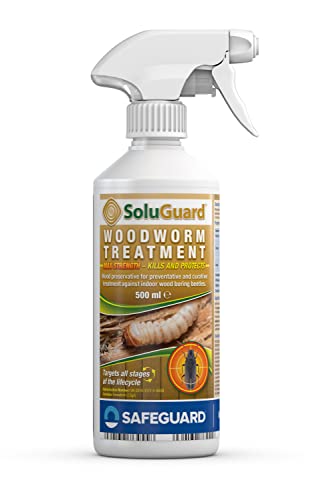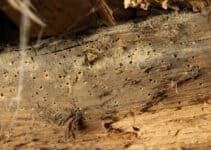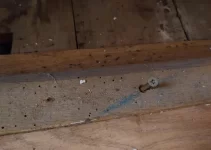Woodworm is a common problem that can affect all types of wood for many homeowners in the UK. It can be a big hassle to deal with, especially if this is the first time you have had to deal with it.
The woodworm can cause extensive damage to your home’s external and internal structures. In some cases, it could mean the destruction of your home.
The presence of woodworms in the home is not desirable. Besides destroying a door or door frame, it can also make it unsightly, and worst of all, it can be hazardous.
But how do you treat woodworm in a door? If you have woodworm, you can successfully treat your door with insecticide or woodworm killer which can be either sprayed or brushed on the affected area.
Read on to find out how.
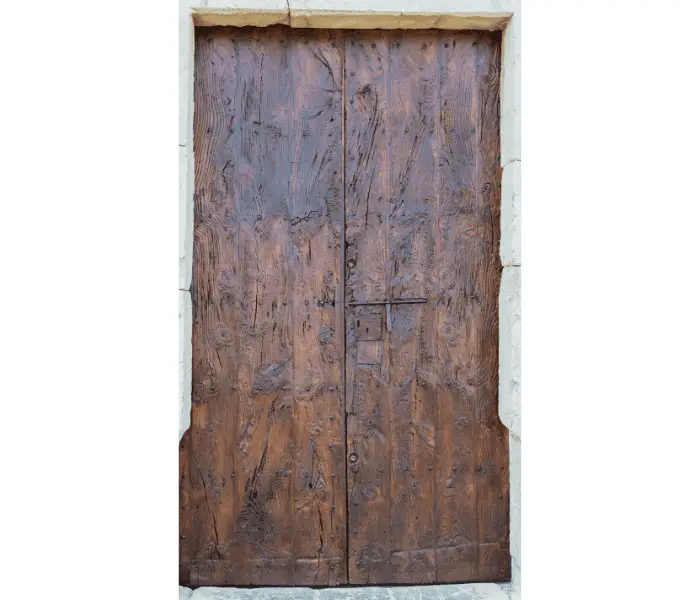
How Do You Get Rid Of Woodworm In A Door?
You may find yourself with a woodworm infestation if you have a wooden door or door frame. However, there is no need to get too worried. There are a few things you can do to make sure you can get rid of woodworm in a door.
The first thing you need to do is identify the woodworm species that affect the door. There are a few different types, and each requires another treatment method.
The most common type of woodworm is the Common a furniture Beetle. This type of woodworm is found in most homes in the UK and not harmful to humans.
The next step is to figure out the severity of the woodworm infestation. This will help you determine the best course of action.
If the woodworm is only affecting a small area of your door, you may be able to treat it yourself. However, if the infestation is more severe, you may need to call in a professional.
There are a few different ways to get rid of woodworm in the door. Here is how to treat it:
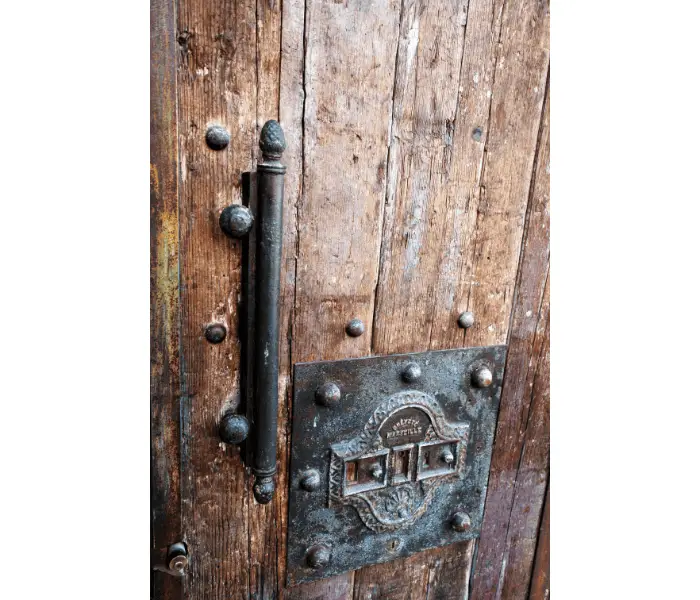
Inspect the Door
The first step is to inspect the door and frame for woodworm damage. Look for small holes in the wood and sawdust around the holes. If you see any damage, it’s vital to take action to get rid of the woodworm.
Clean the door
Once you’ve identified the damaged areas, it’s time to clean the door. Use a vacuum cleaner to remove any dust or sawdust from the holes. You can also use a damp cloth to clean the door’s surface.
Apply Woodworm Killer
The next step is to apply a woodworm killer to the affected areas. There are a variety of woodworm killers available on the market.
Be sure to follow the instructions on the package when applying the killer.
I recommend the following, its spray nozzle makes it much easier to apply to both the door and frame. You can get underneath the door easier than a typical treatment which needs rubbed in.
Wait for the Door to Dry
Once you’ve applied the woodworm killer, it’s important to wait for the door to dry. It can take a few days for the door to dry completely, so be patient.
Check the Door for Signs of Damage
Once the door has dried, it’s important to check for any signs of further damage. If you notice any new holes or sawdust, likely, the woodworm is still present.
In this case, you’ll need to repeat the treatment process until the woodworm is gone.
Remember to wear gloves and a mask when spraying insecticides, and ensure that all members of your household are safe from contact with treated surfaces. It’s also important to keep children and dogs away from treated areas until dry.
Can A Door or Door Frame With Woodworm Be Saved?
It depends on the severity of the woodworm damage. If the damage is extensive, it may not be possible to save the door. However, if the damage is limited to a few areas, it may be possible to repair the door.
Some beetle infestations will only affect the surface layer of timber and so can often be treated without damage to the structure.
Other times, a larger area will need to be cut out and replaced using traditional joints and matching timber – this is where an experienced wood conservator will be able to advise you. Particularly around the door frame
Some woodworm can cause extensive damage to the door frame, eating through several layers, and in these cases, it may not be possible to save the piece of a door.

If you have any doubts about whether you can save your door, it’s always best to consult a professional.
If the damage is limited to a few areas, you can save your door. However, you need to do it quickly and correctly to avoid any further damage.
The treatment involves injecting a chemical such as permethrin into the wood. This will kill all woodworm larvae and adult beetles.
However, if the wood is extensively damaged, it may not be possible to save it. This can happen if the door is left untreated for an extended period.
How Can You Tell If A Door Has Woodworm?
There are several indicators that your a door may be affected by woodworm.
A tell-tale sign of an infestation is the presence of tiny holes in wood caused by woodworm beetles. The holes left by woodworm are usually round, smooth, and range in size from 1mm to 1cm.
They can be found across the surface of the wood but are most likely to be seen towards the bottom of any wooden items.
If you see what appear to be holes in your door, before assuming they’re caused by woodworm, check if they’re actually knotholes or cracks in the grain – these can sometimes look similar.
Examine the door for signs of recent infestation, such as fresh frass or holes. These will be darker than others.
If you’re not sure if your door has been infested, you can always ask for expert advice from auction houses or professional restorers who will be able to tell you whether the piece needs treatment.
If there is no visible evidence, but you’re still worried about buying a piece with previous problems, you can get the timber tested for infestation using ultra-violet light (UV). UV lamps are available to buy online or hire from DIY stores.
Another sign of woodworm is powdery dust known as frass that gathers near the holes and is sometimes visible around them. This happens when emerging beetles push their way out of infested timber and leave behind their waste material.
Frass is a good indicator that your a door has been affected by woodworm because it’s not always easy to spot the beetles themselves – especially if there’s only a small colony present.
Also, if you tap the wood and it sounds hollow, this may be another sign of a problem. Hollow-sounding wood is often an indication of extensive damage caused by woodworm.
How Does Woodworm Get Into A Door?
Woodworm is usually introduced into a door through small cracks or holes in the wooden door frame. The beetles can also enter through gaps around doors and windows.
Once inside, the beetles lay their eggs on the surface of the wood. The eggs hatch into larvae which bore into the wood, feeding on it as they grow. The larvae then pupate and emerge as adult beetles, completing the life cycle.
Larvae can live in a door for many years, so even if you have bought a wooden table or door made from freshly cut timber, it can still have larvae residing inside it.
FAQs
Can Woodworm In a Door Be Treated?
Yes, woodworm in a door can be treated using a range of different methods. These include the use of insecticides, varnish or paint. You can also gloss the door frame for extra protection.
How Do You Fix Woodworm Holes In a Door?
If you have woodworm holes in your door, you can fix them by filling them with a suitable wood filler. Once the filler has dried, you can sand it down and repaint or varnish the surface.
How Do You Prevent Woodworm In a Door?
The best way to prevent woodworm in a door is to ensure that the surface is in good condition and free from cracks or chips. You should also avoid storing a door in damp or poorly ventilated areas.
Conclusion
It is essential to treat woodworm in a door as soon as you notice the problem. If left untreated, the larvae can live in the wood for many years, causing significant damage.
A door frame is especially susceptible to woodworm damage as the wood is often damp and poorly ventilated. Ensure that your door is treated with a suitable insecticide to kill the larvae and stop them from causing further damage.
